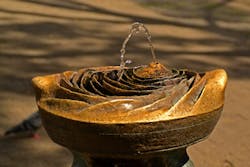EPA announces availability of $87M to improve drinking water for schools, small and disadvantaged communities
SAN FRANCISCO, CA, MAY 2, 2019 -- The U.S. Environmental Protection Agency (EPA) announced the availability of nearly $87 million in grant funding to assist states, tribes, and territories with improving drinking water.
The following funding amounts are available in the Pacific Southwest: Arizona is eligible to receive $1,385,000; California is eligible to receive $7,648,000; Guam and the Commonwealth of Northern Mariana Islands are eligible to receive $150,000 each; American Samoa is eligible to receive $154,000; Hawaii is eligible to receive $554,000; Nevada is eligible to receive $749,000; and Nationally, American Indian and Alaska Native water systems are eligible to receive $3,690,000.
"EPA is committed to ensuring all Americans, regardless of their zip code, have access to safe and clean drinking water," said EPA Administrator Andrew Wheeler. "With these grants, EPA is fulfilling its core mission of providing states, tribes, and territories with the resources needed to protect children from lead exposure and other contaminants and ensure all American families have safe drinking water."
States, tribes, and territories are eligible to receive funding from two new EPA drinking water grant programs established by the Water Infrastructure Improvements for the Nation Act (WIIN):
Under EPA's new Voluntary Lead Testing in Schools and Child Care grant program, EPA will award $43.7 million in grants to fund testing for lead in drinking water at schools and child care programs. Testing results carried out using grant funds must be made publicly available.
Under EPA’s new Assistance for Small and Disadvantaged Communities grant program, EPA will award $42.8 million in grants to support underserved communities with bringing public drinking water systems into compliance with the Safe Drinking Water Act. Funding can also be used for conducting household water quality testing, including testing for unregulated contaminants.
